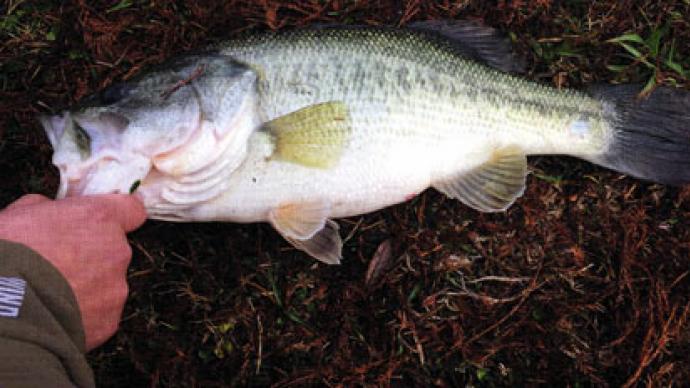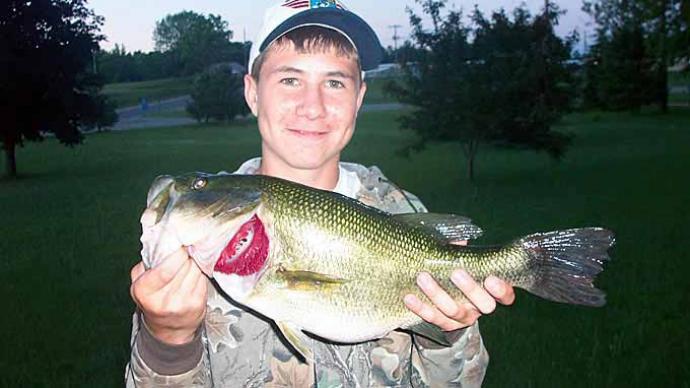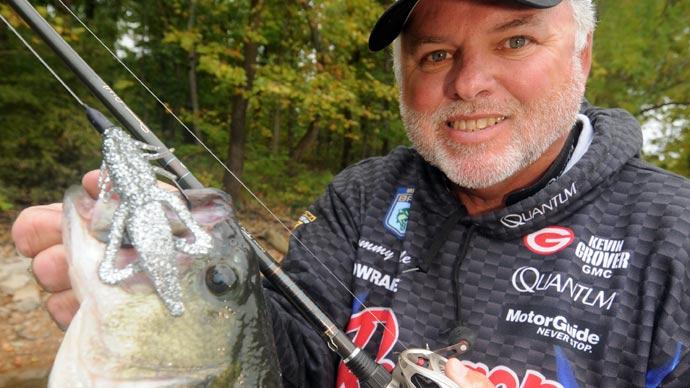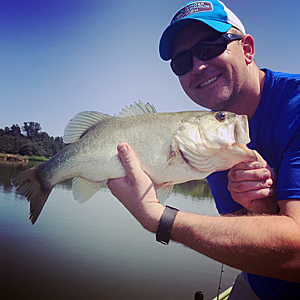
So you want to start bass fishing. Welcome to the club! For me, I started bass fishing this year primarily to get my children outside and in nature. Although my attempt did work on my children to some extent, I became addicted to the sport. Bass fishing is a deep subject with tons of information, which makes it extremely fun and exciting. You will always learn and try new things.
However, I want to start you off on the right foot with hopes that you will experience success before moving on to advanced fishing methods. I have made tons of mistakes, and these mistakes have cost me a lot of money. I will share with you a very simplified approach that I learned through wasted time and money.
Tackle

When I started around March of 2016, I knew absolutely nothing about bass fishing, so I went to the fishing section of Wal-Mart and was blown away at all the different bait options. My brain almost exploded from trying to figure out what to get. I bought crankbaits, spinnerbaits, plastic worms, frogs, and lizards; I think I even mistakenly picked up some saltwater lures. It costs money. My tackle bag is overflowing with baits, most I never use or don’t know how to use. This money sits there in my bag, wasted. I have now learned that I only need one type of bait and three colors. The bait I am talking about is the Senko. The Senko is a straight plastic worm. This bait is not only readily available but also highly versatile.
Gary Yamamoto developed the Senko, but you can use virtually any straight worm in any brand. In my experience, it is the most effective bait for the new bass fisherman.
Why is this the case? It is easy to rig to the hook and straightforward to fish. There are numerous colors, but the three I would suggest buying and using are black, green pumpkin, and watermelon. Length doesn’t matter when you start to buy what the store has – 5-inch or 4-inch. These three bait choices together will cost you around $25. The beauty is that all three can be carried in your pocket when you head to your local pond or lake to bank fish. Also, get some 3/0 Extra Wide Gap (EWG) worm hooks.

Now the type and brand of the hook are essential, and I would suggest always getting Gamakatsu hooks if possible, but other brands work well too.
A pack of hooks should cost you around $5. Your total now is $30. So now that you have your bait and hooks, you will either need to Texas Rig or Wacky rig. I would suggest starting with the Texas rig and moving on to the Wacky rig later if you don’t get a bite.
Equipment
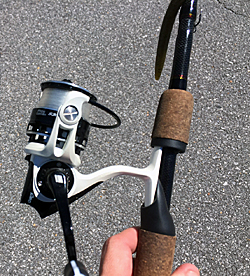
Let us talk briefly about the rod, reel, and fishing line. The rod and reel can also be picked up at Wal-Mart, and I would suggest getting the rod and reel separate and not as a combo. Go with a brand that is well known like Mitchell, Abu Garcia, or Pflueger and a rod brand like Ugly Stick. Choose a spinning reel and medium flex 7-foot rod. This together should set you back around $60 to $80. This brings your total to around $110.
The truth is the gear does matter in most cases. Yes, you can catch fish on anything, but the higher quality products have better sensitivity and better internal parts, which means longer life. Now for the fishing line, in my experience this year, I have bought everything from monofilament to braid. I believe that braid is the strongest and best for spinning gear, and monofilament is the worst. The reason is monofilament has a memory, and it tends to tangle easily. If your local spot has stained water, you could go with a light braid line like a 6- to 8-pound test. If your spot has clear water, then use 6- to 8-pound test fluorocarbon line like Seaguar Red, costing about $11 for a spool. The fluorocarbon can be used on either stained or clear water, which is an excellent all-around option.
The total bill to get on the water should cost you around $125.
Timing and Placement
A lot of bass fishing is about timing. Bass will be shallow all year round at some time or another, so be prepared to either get up early and out to your spot before the sun rises or before the sun sets. I have learned that at my local spot, there are more opportunities early in the morning. When you are in low light conditions like first light or right before the sun goes down, you need to use the Black Senko, and as the light increases, move to the Green Pumpkin or Watermelon colors. The goal here is to make you as successful as possible initially, and we can build on that success with different baits and techniques later.
Now on to placement; when you start fishing, always work your bait parallel to the bank. Fish the bait as close to the bank as possible. Please don’t walk the bank because chances are pretty good that you will spook a fish sitting there at first light. Instead, you should approach the bank cautiously, remembering that you are hunting a predator, and they spook very easily. Start casting to your left and right, extremely close to the bank. I caught a 2.75-pound bass on a cast that landed 5 inches from the bank. When I threw it out there, I thought that was a terrible cast, but I didn’t reel it in; I just went through the standard technique described below. The bass crashed against the bank on my second lift, and I was shocked at first, then began the battle. This beautiful fish jumped out of the water, and we fought for what seemed like forever until I got in on the bank. It is a thrill of a lifetime, and I want you to experience it.
Technique
The retrieve on this bait is effortless. Cast it out, let it sink to the bottom, lift reel in the slack, and continue until it gets back to you. An important tip is to keep the bait on a tight line and constantly watch the spot where your line enters the water for any movement left, right, away, or toward you. If you see that movement and feel a bite wait a couple of seconds, quickly lift the rod. You will identify the difference between the feeling of the bait moving across the bottom of the lake or pond and the bite of a bass. It is a night and day difference, almost like a tick-tick feeling.
Also, remember is that bass move around most of the time, so just because you cast your lure to a spot five minutes ago does not mean that a bass has not moved into that spot. Just believe in yourself and continually cast left and right, being patient. Vary your casts and retrieve continually, moving your cast further out from the bank each time. This allows you to put your plastic worm in the strike zone for longer.
Conclusion
I hope you learn from my experience as a new bass fisherman. You don’t need to spend hundreds of dollars. Following this guide, you will spend approximately 125 dollars, an extremely minimal investment to make for a possible lifelong hobby filled with excitement.

Joseph Bailey
I am a devoted husband and father of six children living in Pensacola, Fla. I started bass fishing in 2016 to get my young children outside and in nature. I have since become addicted to the sport of bass fishing. I spend my off-work time fishing and coaching t-ball. My personal best bass is 3.87 pounds caught in Mississippi in August 2016. I am dedicated to sharing what I have learned with the world of fishing.
Twitter handle: @TheJoeBailey


